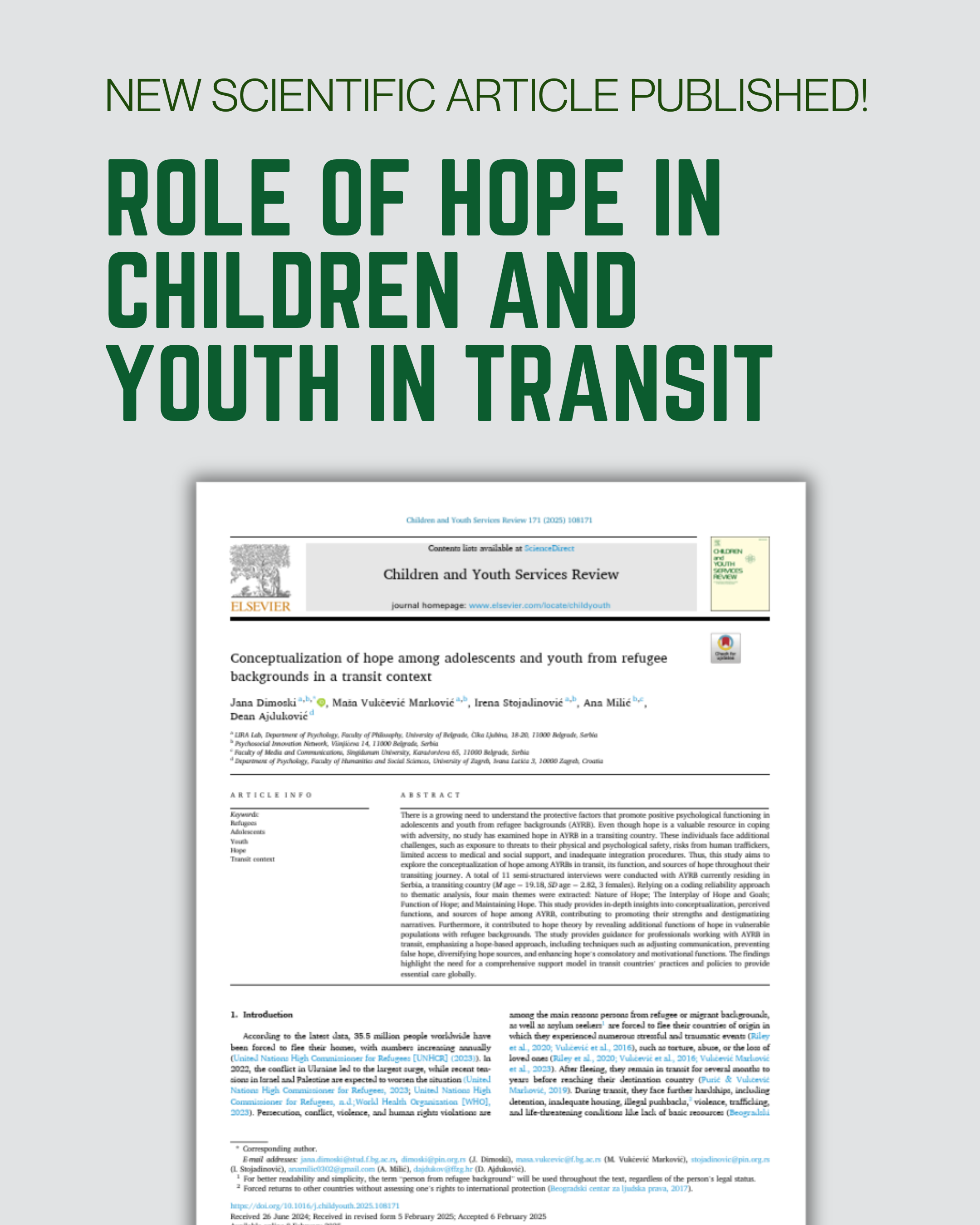Our latest—and also the first article in 2025—titled „Conceptualization of hope among adolescents and youth from refugee backgrounds in a transit context,“ which explores how hope is conceptualized and the role it plays among adolescents and youth in transit, has been published in the journal Children and Youth Services Review.
There is a growing need to understand which protective factors foster positive psychological functioning in adolescents and youth from refugee backgrounds (AYRB). While hope is a valuable resource for coping with adversity, no prior research has examined hope within this population in transit countries.
These young individuals face several challenges, including exposure to threats to their physical and psychological safety, risks of human trafficking, limited access to medical and social support, and inadequate integration procedures.
What was our goal?
The aim of this study was to explore how AYRB in transit conceptualizes hope, what functions it serves, and what their sources of hope are during their journey through transit countries.
What did we do?
We conducted a total of 11 semi-structured interviews with AYRB currently residing in Serbia, a transit country (M age = 19.18, SD = 2.82; 3 female participants). Using a thematic analysis and coding process, four main themes were identified: Nature of Hope, The Interplay of Hope and Goals, Function of Hope, and Maintaining Hope.
The findings suggest that hope serves as both a motivational and consolatory resource for AYRB on their journey from their country of origin to their destination country. The study offers in-depth insights into how these young people conceptualize hope, how they experience it, and where it comes from—contributing to the affirmation of their strengths and the destigmatization of refugee narratives.
The study also guides professionals working with AYRB in transit, emphasizing a hope-based approach. This includes techniques such as adjusting communication, preventing false hope, diversifying sources of hope, and enhancing hope’s consolatory and motivational functions. The findings highlight the need for a comprehensive support model in transit country practices and policies to ensure adequate care on a global scale.
Read more about the article here:
Dimoski, J., Vukčević Marković, M., Stojadinović, I., Milić, A., & Ajduković, D. (2025). Conceptualization of hope among adolescents and youth from refugee backgrounds in a transit context. Children and Youth Services Review, 171, 108171. https://doi.org/10.1016/j.childyouth.2025.108171
